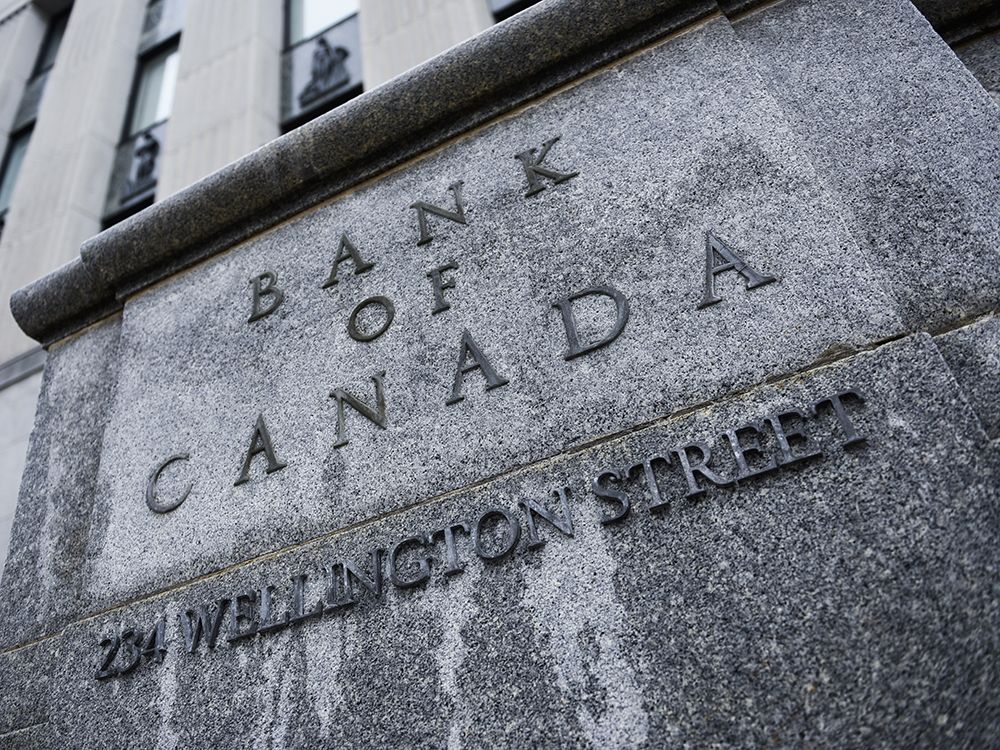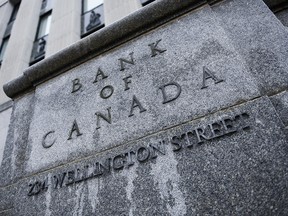Bank of Canada’s Paul Beaudry suggests benchmark rate could top 3%

Kevin Carmichael: Inflation unprecedented since the central bank adopted the index as its guide for policy in 1991

Article content
The Bank of Canada appears to have concluded that it will need to lift its benchmark interest rate to at least three per cent to keep inflation from becoming entrenched.
Advertisement 2
Story continues below
Article content
Canada’s benchmark rate is currently 1.5 per cent following a half-point increase on June 1.
That’s a quarter-point shy of the pre-pandemic rate of 1.75 per cent, which was as high as policymakers managed to push the rate during the tortured recovery that followed the Great Recession. The economy never really gathered significant momentum over the decade that followed the 2008-09 financial crisis, precipitating an environment of weak inflation that left central bankers looking over their shoulders for a re-emergence of deflationary forces.
But, as Paul Beaudry, one of the central bank’s deputy governors, said in a speech on June 2, the “situation today is totally different.”
The consumer price index never increased more than 3.7 per cent on a year-over-year basis between 2010 and 2020. In April, the index surged 6.8 per cent, the second-biggest increase since the early 1980s. Inflation has now exceeded the high end of the Bank of Canada’s comfort zone of one per cent to three per cent for 12 consecutive months, unprecedented since the central bank adopted the index as its guide for policy in 1991.
Advertisement 3
Story continues below
Article content
“Price pressures are broadening and inflation is much higher than we expected and likely to go higher still before easing,” Beaudry said.
The Bank of Canada earlier this week observed that all the inflation gauges it watches to separate “core” prices from the volatile swings in the cost of food and energy now exceed three per cent. That’s a problem for households who must suddenly cope with a higher cost of living. Policymakers have an additional problem in that their credibility is on the line, since their mandate is to keep the consumer price index advancing at an annual rate of about two per cent.
The Bank of Canada this week has hardened its message about its resolve to crush inflation, even if that means testing the country’s willingness to accept an economic downturn to contain upward price pressures.
Advertisement 4
Story continues below
Article content
There are several examples of this resolve, including the Bank of Canada’s suggestion that its latest economic outlook probably understates inflation, and its acknowledgement that it’s worried about inflationary expectations becoming “entrenched.”
But perhaps the clearest signal of a shift was Beaudry’s guidance in his speech to the Gatineau Chamber of Commerce that the policy rate probably will need to go outside its neutral range to restrain economic growth. “Neutral” is a theoretical rate that neither stokes or chokes economic growth. The Bank of Canada estimates this country’s neutral rate is between two per cent and three per cent.
The spreading of inflationary pressures suggests taming them will require choking demand.
Advertisement 5
Story continues below
Article content
“This raises the likelihood that we may need to raise the policy rate to the top end or above the neutral range to bring demand and supply into balance and keep expectations well anchored,” Beaudry said.
Many on Bay Street have already concluded that the Bank of Canada will need to take its benchmark rate above three per cent to get inflation under control. Those observers reckon the central bank was late starting on a path to higher interest rates, so it will have to work that much harder to douse inflationary pressures.
Beaudry acknowledged that inflation has “consistently exceeded our forecasts,” and said policymakers will present an “initial analysis” of their forecasting errors when they release their next quarterly economic outlook next month.
Advertisement 6
Story continues below
Article content
Evidence that the central bank is attempting to learn from its mistakes could shore up confidence in the institution, especially among the critics who think central bankers are out of touch with reality. A transparent analysis of what went wrong could offset criticism that the central bank was blinded by arrogance and didn’t simply make an honest mistake.
Beaudry insisted the miss on inflation was rooted in the latter. He said in the speech that the sort of commodity price spikes that came with the recovery from the pandemic tend to be temporary. Therefore, with the economy recovering from an epic crash, and waves of COVID-19 still a present threat to growth, policymakers opted to err on the side of stimulus.
-

Bank of Canada raises rate half a point to 1.5%, signals more hikes to come
-

Canada’s economic growth slows to 3.1%: What you need to know
-

Canadian inflation rises to 6.8%: What you need to know
Advertisement 7
Story continues below
Article content
“The risk seemed appropriate to take at the time, given the slack in the economy and the view that the supply-driven sources of elevated inflation would likely prove temporary,” Beaudry said.
“The situation today is notably different,” he continued. “The Canadian economy is in excess demand. In addition, the initial disruptions to international supply chains have persisted longer and broadened more than we expected, partly reflecting strong demand in the world economy.”
Bottom line: “The risk is now greater that inflation expectations could de-anchor and high inflation could become entrenched.”
That’s a central banker’s worst nightmare. For years, the catchphrase of monetary policy was “lower for longer.” It’s time for a new one: higher, faster.
• Email: [email protected] | Twitter: CarmichaelKevin
Advertisement
Story continues below








